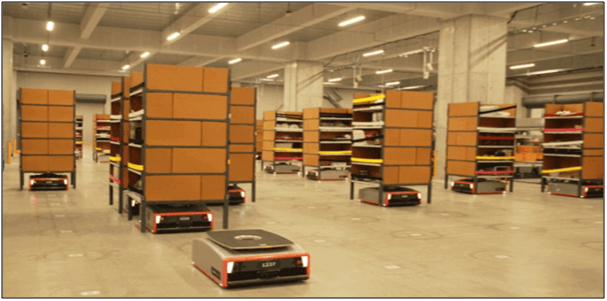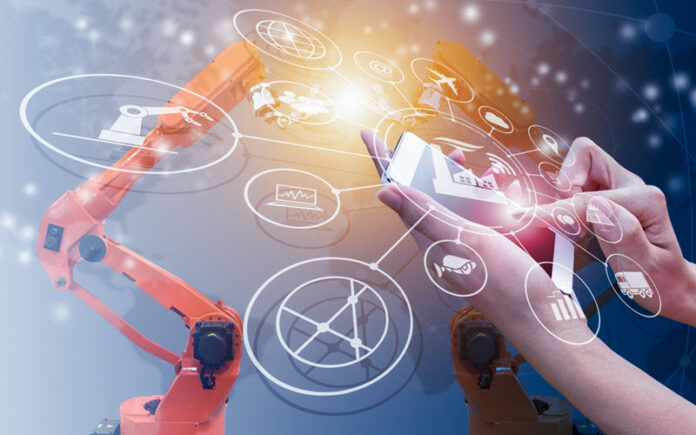Today’s new generation of automation technologies has become the greatest innovation in achieving high standard practices for all businesses. It provides ultimate value and understanding of the workflow of everything that has shown a quick response according to its functions.
The evolution of Automation Technologies has improved simultaneously for Logistics Service Providers, enabling various modes of collaborative workflows between humans and robots. Hence, Supply Chain has gone into so many ways to be a future-ready and implemented automation technologies to give high satisfaction to all mankind.
Table of Contents
Artificial Intelligence (AI) Transforming Robotics
Artificial Intelligence in robots has become an excessively popular solution for all businesses that give new opportunities to improve efficiency, security, and save people valuable time. It composes a lot of data volumes, advanced algorithms, and unstoppable process development in computing power and storage.
AI works for machines to learn from experience, regulate the new processes, and carry out human-like tasks. AI and Robotics are a substantial collaboration of automating tasks inside and out of doors in the factory setting. Artificial Intelligence expands the potential for robots to achieved computerized tasks, in high volume, accurately such as lifting, fetching, and carrying without fatigue.
Warehouse Robotics Technology
The new robotic technologies have become the most popular automation in the logistics industry. Implementing warehouse robotic technology will give an outstanding overall benefit. It will assist in the completion of various orders and eliminate manpower issues. This is the sort of science and technology that implicates the conception, scheme, manufacture, and operation of robots. Generated through the principle, and use of a computer that operates with artificial intelligence (AI), electronics, mechatronics, mechanical, nanotechnology, and bio-engineering. A robot attributed a body, machines, a sensor system, an influence supply, and a computer brain that controls all. Typically, robots are a man-made version of animal life, they’re machines that replicate human and animal behavior. Robots have a programmable brain (a computer) that moves and changes its movement. Today, robots can effectively navigate the spread of environments.
Automated Guided Vehicle Systems (AGVs)
AGVs are easily integrated into the quality of the production environment. These are mobile robots that follow markers or wires on the floor or use visions or lasers. It is computer-controlled and wheel-based that travels on the floors without operators. Through a period the technology has become more advanced and so today automated vehicles are generally laser navigated. AGVs are used as unit load vehicles or forklifts, pallet trucks, used in sorting, storage, and cart vehicles. They are often used in manufacturing facilities, and in warehouses that are constantly looking for great results concerning productivity and flexibility.
Butler Robotics System
Butler is that the automated robotic “goods-to-person” solution. This technology seriously increases Intra-logistics productivity. It assists the storekeeper to reduce his time in walking throughout the warehouse while doing the picking. Robots will move around using trackless navigation guided by QR codes that are marked on the ground, and carrying shelves to a floor assistant. The Butler robotics solution offers a compelling business seeing more interest, with the boom in e-commerce globally has resulted in numerous businesses needed to manage same-day order-to-dispatch times rather than subsequent or more days for delivery.

Internet of Things (IoT)
This is a network of connected devices and sensors, interrelated, internet-connected objects that enable us to collect and transfer data over a wireless network without human intervention. It’s all about data that rely on an IP-based network to send data collected from connected devices. A ‘thing’ that connected to a medical device, a biochip transponder, a solar array, a connected automobile with sensors that aware of a driver to possible issues, any objects that outfitted with sensors which will gather data and transfer over a network. With newer technologies and connectivity schemes, IoT innovation will still evolve, advancing the transformation of unconnected objects into smart connected devices.
Machine-to-Machine Technologies (M2M)
The latest system that controls all the hardware inside the warehouse that essentially showing satisfaction on the results of all innovations. M2M systems operate peer-to-peer communications, into machines, sensors, and hardware over wired, or wireless networks. Technologies and services supported this concept to assist remotely manage and control equipment data. The most target of M2M is to permit access to sensor data and transmit to a network. Consequently, the software framework is programmed to assist a network device to explicate data, make quick decisions, and trigger automated actions. The popular kind of machine-to-machine communication is telemetry. Through the Internet and advanced processes of technology, it extended the tasks from pure science, engineering, and manufacturing to daily use products.
Radio Frequency Identification (RFID) Technology
It is a wireless technology that uses electromagnetic frequencies, automatically identify and track the thing. During this technology, the RFID tag wants to get attached to the thing. The reader is continuously sending radio waves. Whenever this object is within the range of the reader, then this RFID tag wants to transmit its feedback signal back to the reader. This is often almost like the technology that’s utilized in a barcode. But just in case of a barcode the thing and therefore the scanner should be the line of sight. As this RFID technology is not a line of sight technology, as far as this object is within the range of the reader, the object is in position to spot the reader and ready to send its feedback single back to the reader. Using RFID technology, we will track even multiple objects at an equivalent time.

Aerial Drones Technology
The Drones or UAV (Unmanned Aerial Vehicles) industry is developing rapidly and to change the movements of the Supply Chain Industry. Drone delivery has been in practice in most developed countries that have the capacity of making an inventory in a logistics warehouse, transporting goods by air, and carrying out security services. Using Drones in the warehouse play a massive role in taking accurate, and efficient results in inventory management. It is equipped with advanced optical, RFID, cameras, and barcoding sensor and give feedback to the operators. Drone delivery allows the customer to expect quick delivery and exact tracking status on a true time at anywhere. Also, drones make it possible to succeed in areas that can’t be reached by other modes of transport like the military, and the defence industry.
The full content is only visible to SIPMM members
Already a member? Please Login to continue reading.
References
A&D. (2019). “Artificial Intelligence Transforming Robotics”. Retrieved from https://www.industr.com/en/artificial-intelligence-transforming-robotics-2393024, accessed on 12/09/2020.
MJV. (2019). “Machine to Machine”. Retrieved from https://www.mjvinnovation.com/blog/m2m-what-it-is-and-how-it-works/ , accessed on 11/09/2020
Natali Taglic. (2020). “What are Automated Guided Vehicles”. Retrieved from https://6river.com/what-are-automated-guided-vehicles, accessed on 02/09/2020
Nurahim Bin Masruri, GDLM. (2017). “Innovative Technologies for Warehouse Implementation”. Retrieved from SIPMM: https://publication.sipmm.edu.sg/innovative-technologies-warehouse-implementation, accessed on 03/09/2020.
Wong Kam Foo, DLSM. (2020). “Technologies for Improving Logistics Productivity”. Retrieved from SIPMM: https://publication.sipmm.edu.sg/technologies-improving-logistics-productivity, accessed on 31/08/2020. Yap MengKuan. DLSM. (2020).
“Application of Technologies for Logistics Integration”. Retrieved from SIPMM: https://publication.sipmm.edu.sg/application-of-technologies-for-logistics-integration, accessed on 11/09/2020.





